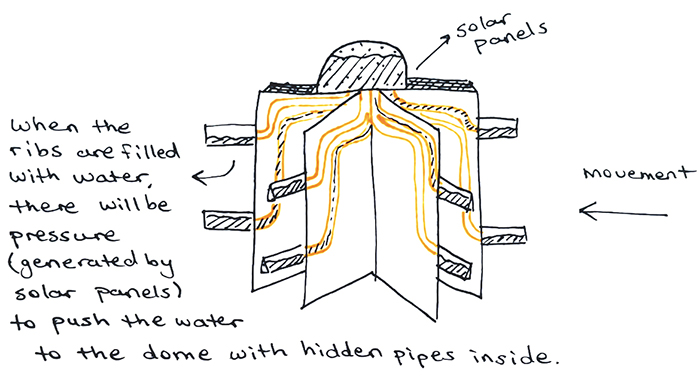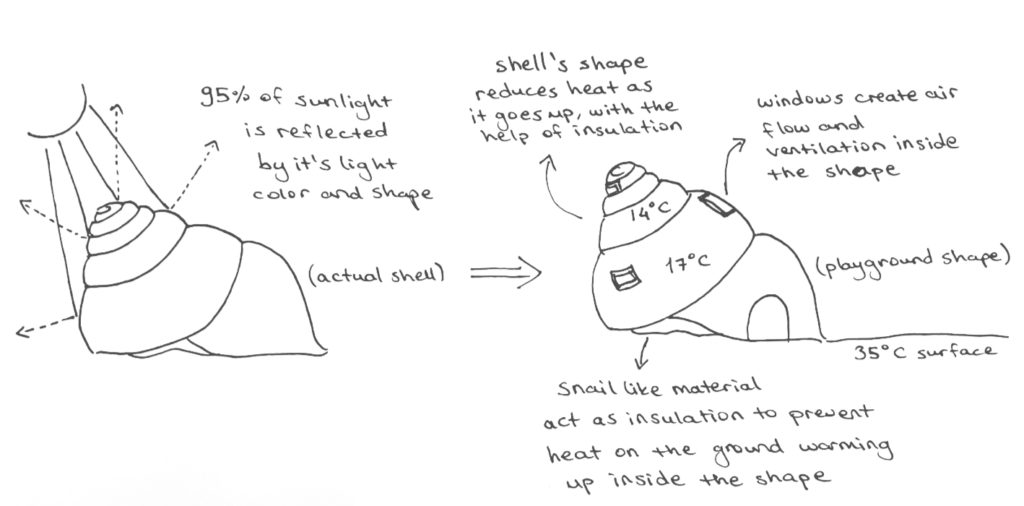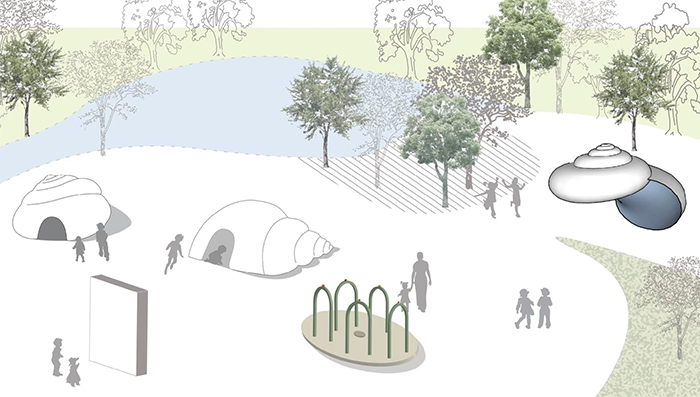More
Purpose/Impact
The team’s original idea was to design non-traditional homes that incorporated biomimicry to offset the heat island effect—a phenomenon that occurs when the urban built environment absorbs and radiates the sun’s heat more than in natural landscapes. These homes would be modeled after organisms such as lotus flowers and the desert snail due to their self-cleaning and cooling properties. However, based on discussions with an industry expert in interior design, the team was challenged to think on a larger, citywide scale, beyond individual homes. After examining a variety of existing designs that target the heat island effect, the team proposed expanding the cooling effect of city architecture.
Challenged to consider ways to improve aspects of the shared environment of marginalized communities, the team homed in on New York’s outdoor bus stops, many of which provide little or no shelter to protect riders from excessive heat. The students emphasized their project’s potential for impact especially in low income areas, hoping to address and potentially improve this public resource.
The team studied two bus routes in New York City with high ridership and poor infrastructure; using TinkerCAD, they mocked up conceptual 3D models of improved shelters. Inspiration for the design came from other heat-affected areas, as well as cacti, which have a naturally cooling shape. The modified bus stop cover, made from recyclable materials, would not only protect riders from heat, wind, and precipitation, but also provide a meaningful cooling effect for the surrounding area.
Additionally, the team created another practical, biomimetic design to address the heat island effect: playground rides that take design cues from snail shells. The desert snail survives hot temperatures with its curved shape and white color, which reflects instead of absorbs sunlight. The team found that building slides in a snail shell shape would result in a significantly cooler playground ride than traditional slide designs.



Outcomes/Accomplishments
With FIT’s continued participation in this global event, the college deepens its connection to the emerging field of biodesign, addressing social, environmental, and design challenges with innovative, biology-inspired solutions. This project sustainably addresses the heat island effect in cities like New York, and it could improve the environmental, economic, and health conditions of some of the city’s most underserved neighborhoods. The team’s ultimate goal is to improve the quality of life in these communities. They believe cactus bus stops and snail shell slides can help offset the effects of climate change.
STATUS UPDATE
The research and digital assets created for this competition will be used to raise awareness for the need for public infrastructure to combat the heat island effect. Education programs such as this spread awareness on consequential issues, and interdisciplinary solutions that combine biomimicry and social programming allow communities to address these problems in effective, inclusive, and beautiful ways.




